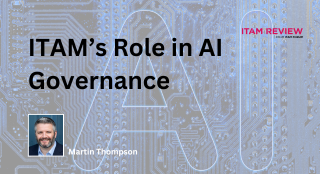ARTICLE: 3 Steps to Negotiating Software Agreements
 Daryl Ullman is a Software Licensing Consultant at Emerset, a company he founded in 2004. Daryl has eleven years experience in IT including seven years at Microsoft in Israel.
Daryl Ullman is a Software Licensing Consultant at Emerset, a company he founded in 2004. Daryl has eleven years experience in IT including seven years at Microsoft in Israel.
Here he shares his unique three step process for negotiating software license agreements;
STEP ONE – GAP ANALYSIS
Step One is to perform a Gap Analysis. We take a detailed look at our clients licensing status. This requires some form of software inventory tool to find out what is installed and usually involves some level of data cleansing to in order to build a clean inventory of installed assets. We collect anywhere up to six years worth of historical license records from the customer and vendor, their contracts, purchase history and build a statement of entitlement. We can then provide a licensing status report.
STEP TWO – FINANCIAL ANALYSIS
Step Two is Financial Analysis. We use data from the Gap Analysis and look at what the customer is planning 3 to 6 years from now. We look at what projects they have on the horizon, their strategic plans and compare and contrast this to the vendors roadmap and upgrade plans. We make sure the relevant agreements are in place and look at the various options available to the customer. Finally we look at the ramifications 3 to 6 years down the line for each agreement option. How it works out in terms of their projects, financials and their agreements.
STEP THREE – PLANNING THE NEGOTIATION
Step Three is when we begin planning the negotiation. This part is rarely performed by customers before a negotiation – even when millions of dollars are at stake. There is no negotiation strategy. We work with the customer to define the goals of the negotiation of the new contract. How much are they going to spend? what is their budget? We set out the differences between maintenance payments and new licenses and agree soft objectives such as support benefits, training vouchers and training.
Daryl claims that using this 3 step process in negotiations saves his clients 10% – 30% on licensing costs.
If you have any experience, techniques or advice for negotiating software license agreements please contact us
Can’t find what you’re looking for?
More from ITAM News & Analysis
-
Broadcom vs Siemens AG - A Brewing Storm
The ongoing legal battle between VMware (under Broadcom ownership) and Siemens is yet another example of why ITAM goes far beyond license compliance and SAM. What might, at first glance, appear to be a licensing dispute, ... -
Shifting Left Together: Embedding ITAM into FinOps Culture
During one of the keynotes at the FinOps X conference in San Diego, JR Storment, Executive Director of the FinOps Foundation, interviewed a senior executive from Salesforce. They discussed the idea of combining the roles of ... -
Addressing the SaaS Data Gap in FinOps FOCUS 2.1
I recently reported on the FinOps Foundation’s inclusion of SaaS and Datacenter in its expanded Cloud+ scope. At that time, I highlighted concerns about getting the myriad SaaS companies to supply FOCUS-compliant billing data. A couple ...
Podcast
ITAM training
Similar Posts
-
The M&S Cyberattack: How IT Asset Management Can Make or Break Your Recovery
Marks & Spencer (M&S), the iconic UK retailer, recently became the latest high-profile victim of a devastating cyberattack. Fellow retailers The Co-Op and Harrods were also attacked. Recent reports suggest the rapid action at the Co-Op ... -
AI in ITAM: Insightful Signals from the Front Line
During our Wisdom Unplugged USA event in New York in March 2025, we engaged ITAM professionals with three targeted polling questions to uncover their current thinking on Artificial Intelligence—what concerns them, where they see opportunity, and ... -
How ISO/IEC 19770-1 Can Help Meet FFIEC Requirements
In the world of ITAM, the regulatory spotlight continues to intensify, especially for financial institutions facing increasing scrutiny from regulatory bodies due to the growing importance of IT in operational resilience, service delivery, and risk management. ... -
An Introduction to Scope 4 Emissions
Executive Summary For ITAM teams, sustainability is a core responsibility and opportunity. Managing hardware, software, and cloud resources now comes with the ability to track, reduce, and report carbon emissions. Understanding emission scopes—from direct operational emissions ...




